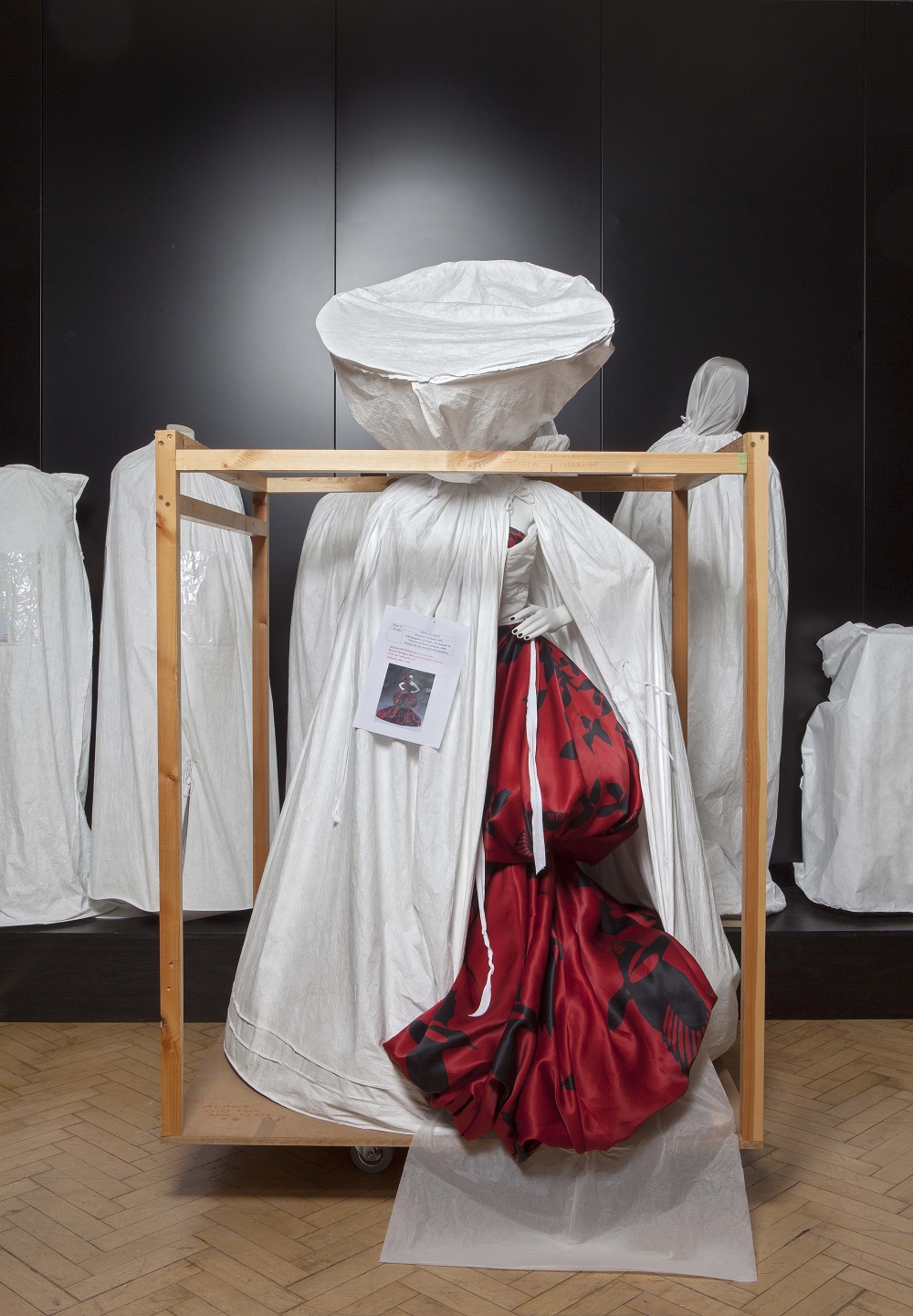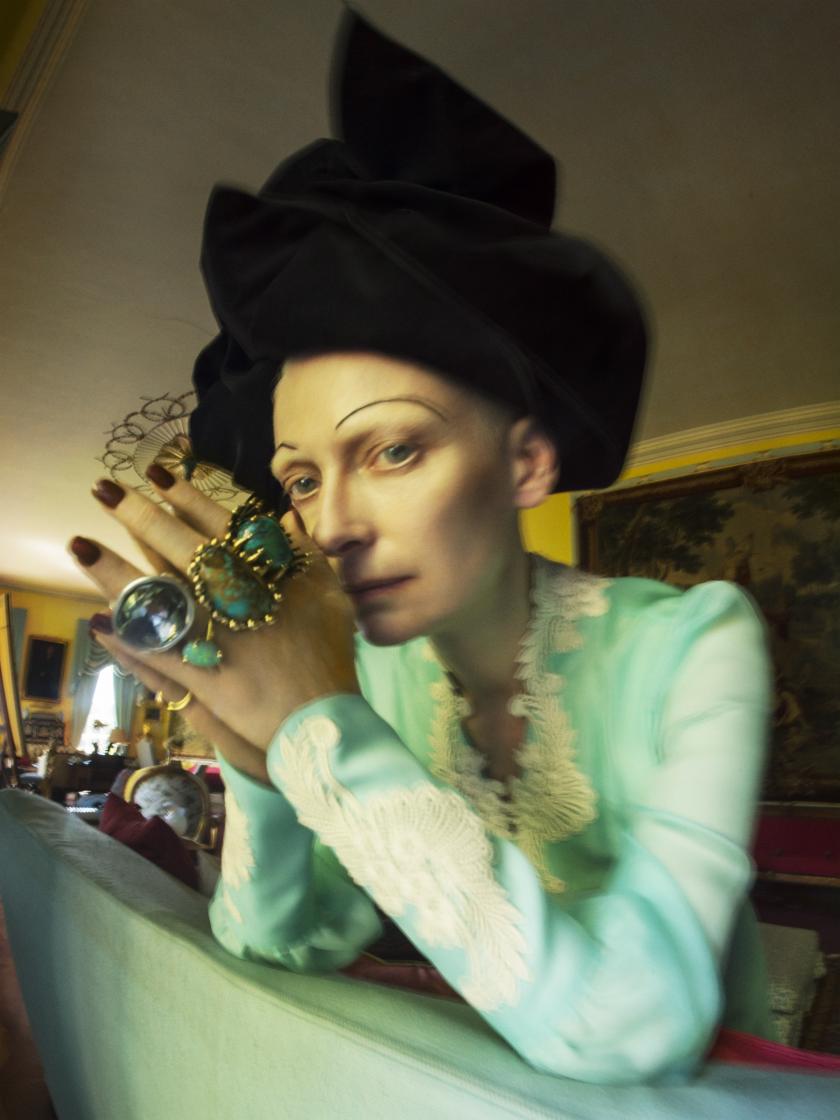If leafing through the pages of Vogue is a soothing balm, Wonderful Things is a bracing full-body immersion. Though it builds on the V&A’s reputation for blockbuster fashion exhibitions, this show, dedicated to one of the most celebrated photographers of the day, follows no known formula, steering a course somewhere between retrospective and walk-in fashion magazine, without being either. At a time when curators’ voices have a tendency to be dominant to the point of intrusive, falling down the rabbit hole of Tim Walker’s fantasy world feels a bit like stepping inside the photographer’s brain.
Curiously, it isn’t at all self-absorbed. Wall texts are written in the first person, and galleries are as full to bursting with images and props as Walker’s scrapbooks, but it is the marvel of the creative mind that takes centre stage, with the museum itself prominent as both host and subject.
 Following last year’s opening of the V&A’s Photography Centre, the exhibition is a shining example of the museum’s commitment to commissioning new art. At its core are 10 individual photographic projects, each inspired by objects in the V&A’s collections. From Chinese snuffboxes and stained glass windows, erotic prints and fashion archives, Walker conjures imaginary worlds brought to life in displays that combine his photographs with sound, film, props and texts.
Following last year’s opening of the V&A’s Photography Centre, the exhibition is a shining example of the museum’s commitment to commissioning new art. At its core are 10 individual photographic projects, each inspired by objects in the V&A’s collections. From Chinese snuffboxes and stained glass windows, erotic prints and fashion archives, Walker conjures imaginary worlds brought to life in displays that combine his photographs with sound, film, props and texts.
The most successful are those with multiple resonances, such as a country house-style installation dedicated to Edith Sitwell, a pair of whose shoes, and various other items of clothing are held by the V&A and on display here. Tilda Swinton adopts the role of the poet, a distant relative of hers, for a series of photographs taken at the Sitwells’ ancestral home (main picture). Swinton’s photogenic face recalls that of Sitwell, another remarkable-looking woman, while the surrealist distortions and visual wit of Walker’s photographs recall those of Cecil Beaton, who photographed Edith Sitwell in the 1920s.
Beaton’s influence is evident throughout, and for good reason: one of Walker’s first jobs was cataloguing Vogue’s Beaton archive. Aside from the props and visual tricks, he shares with Beaton a real ability as a portraitist, and this, in the end is surely what makes his great photographs more than just fashion shots.
In contrast, Walker’s artful reinterpretations of Aubrey Beardsley’s illustrations for Lysistrata are too stylish by half, their stark black-on-white (though not black-and-white) and elegant curves as Mod as they are fin de siècle. In their polished perfection they lack the combination of narrative and fragile beauty that animates Walker’s best pictures, surely among them his “love letter to the conservators, curators and archivists”, in which an Alexander McQueen dress, wrapped for storage (pictured above), inspires a beguiling story of ghostly, dusty mannequins.
- Tim Walker: Wonderful Things at the V&A until 8 March 2020
- More visual arts reviews on theartsdesk










![SEX MONEY RACE RELIGION [2016] by Gilbert and George. Installation shot of Gilbert & George 21ST CENTURY PICTURES Hayward Gallery](/sites/default/files/styles/thumbnail_125_x_125_/public/mastimages/Gilbert%20%26%20George_%2021ST%20CENTURY%20PICTURES.%20SEX%20MONEY%20RACE%20RELIGION%20%5B2016%5D.%20Photo_%20Mark%20Blower.%20Courtesy%20of%20the%20Gilbert%20%26%20George%20and%20the%20Hayward%20Gallery._0.jpg?itok=3oW-Y84i)




Add comment